Bahrain’s stories come from a place where the desert meets the sea. This mix shaped a style of folklore that feels different from other parts of the Middle East. For centuries, the island sat on active trade routes. Travelers, merchants, sailors and local families shared stories that reflected their daily lives. The hot desert gave rise to tales of spirits and shape-shifters. The Gulf waters, once central to pearl diving, inspired talk of sea beings, giant creatures and voices beneath the waves.
Many of these stories date back to the ancient Dilmun civilization. Early myths from Dilmun focused on purity and the idea of a world filled with unseen forces. These ideas blended with Islamic teachings, Bedouin stories and the beliefs of seafarers. Over time, this created a wide range of mythical beings that helped people make sense of danger, loss and survival. Families passed these stories down to warn travelers, protect children and explain the world around them.
This article explores the well-known creatures that come from Bahrain’s deserts and seas. Each one reflects the island’s landscape, traditions and imagination. If you want to explore myths from nearby regions, you may also like Arabian Mythical Creatures and Folklore of the Middle East.
The Mythological Roots of Bahrain
Bahrain’s folklore has deep roots. These roots stretch across ancient history, daily life and spiritual beliefs. One of the earliest influences was the Dilmun civilization. Dilmun appears in old records as a place linked with peace, paradise and hidden forces. Many early myths from this period introduced the idea of spirits that lived alongside humans.
New layers formed as people settled, traveled and worked across the island. Bedouin tribes created stories about jinn, ghouls and wandering spirits. These stories warned people not to stray far from safe paths in the desert. Pearl divers, who faced long hours underwater, added tales of unseen beings below the surface. Their work was dangerous, so these stories helped explain sudden accidents or signs of trouble.
Much of Bahrain’s folklore survived through spoken storytelling. People shared these tales in family gatherings, desert camps and fishing boats. Many stories also appear in the folklore of nearby countries like Saudi Arabia, Qatar and the UAE. Even with these similarities, Bahrain’s mix of desert and sea gave its creatures a distinct identity.
Themes in Bahrain’s Mythical Creatures
Many of Bahrain’s mythical beings follow similar themes. They involve ideas like temptation, trickery, danger, protection and moral choices. These themes reflect daily life on an island where people had to face both harsh deserts and unpredictable seas. Many creatures in these stories appear as humans at first, then reveal their true nature. This idea reminds listeners to stay alert, choose wisely and trust their instincts.
The environment played a major role in shaping these stories. The desert brought heat, isolation and the risk of getting lost. Tales about desert spirits helped explain these dangers. The sea brought storms, strong currents and the fear of the unknown beneath the surface. People gave these threats familiar forms by linking them to jinn or serpent-like creatures.
These stories also served as warnings. Parents told children not to wander far from home. Travelers learned to show respect for nature. Over time, the stories helped shape behavior and pass on survival lessons.
Desert Creatures of Bahrain
1. Umm Al Duwais – The Desert Seductress
Who is Umm Al Duwais in Gulf folklore?
Umm Al Duwais is one of the most famous figures in Bahrain and the Gulf region. She appears as a beautiful woman with sharp, cat-like eyes, long braided hair and a sweet scent that follows her. Her looks hide a darker truth. She has clawed hands and sometimes animal-like feet. Her appearance warns that she is not human.
Stories say she targets men who act dishonorably. She uses charm to draw them in. When they fall for her beauty, she reveals her true form and punishes them. These stories offered clear lessons about loyalty and moral behavior.
People across the Gulf tell versions of her tale. In some places, she carries a dagger. In Bahrain, she is more often described as a jinn in disguise. Her role stays the same across the region. She punishes those who ignore their values.
2. Al Ghoula (Ghoul) – The Shape-Shifting Desert Demon
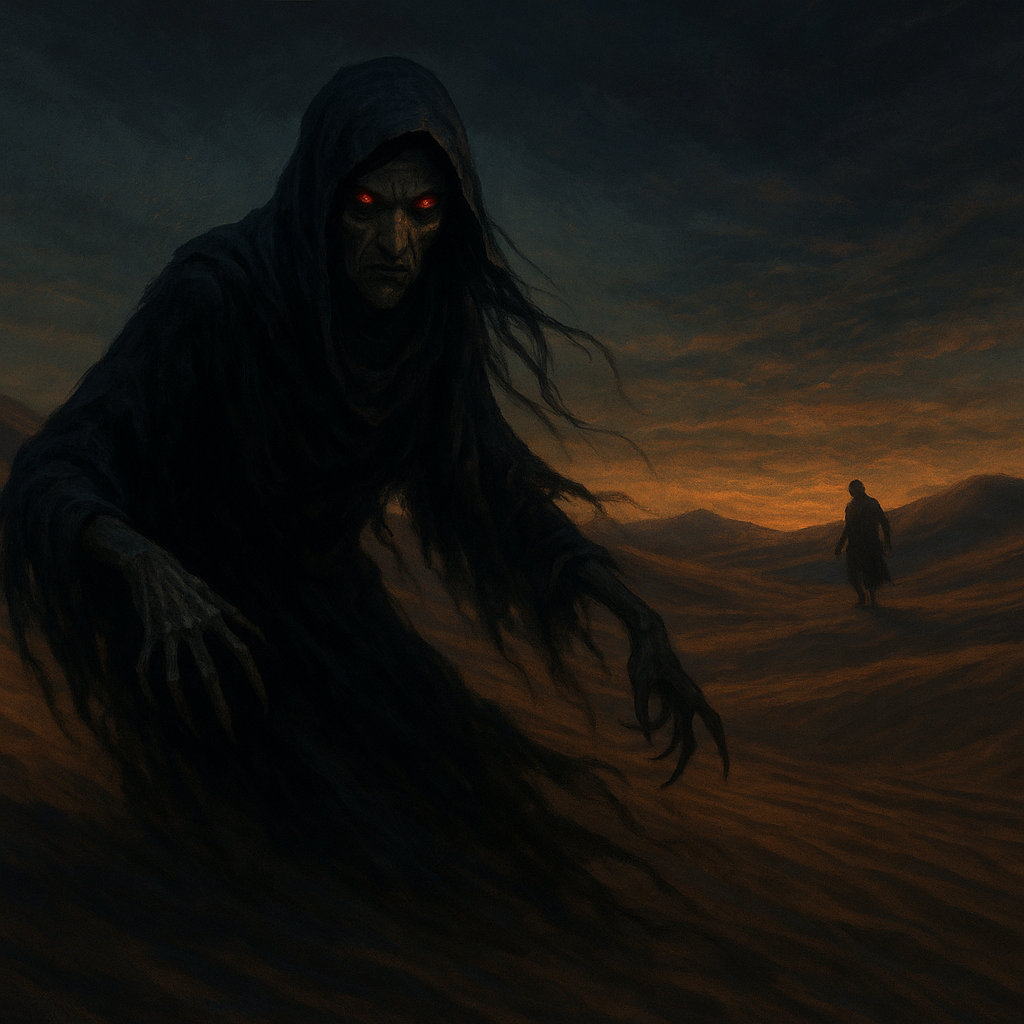
What is the ghoul in Arabian mythology?
Al Ghoula is a frightening creature found in many Arabian stories. In Bahrain, she often appears as a lone traveler or woman. Once she gains someone’s trust, she leads them into the desert. When they are far from safety, she shows her true form, which is monstrous and hungry for human flesh.
People believed she lived near desert paths, valleys and dunes. These were areas where travelers often became lost. Parents used her story to stop children from wandering into unsafe places.
In many Bahraini tales, she hunts people who lose their way. The story worked as a warning about real dangers like heat, thirst and confusion in the desert. Al Ghoula symbolized both fear and the need for caution.
3. Umm Al Subyan – The Child-Harming Spirit
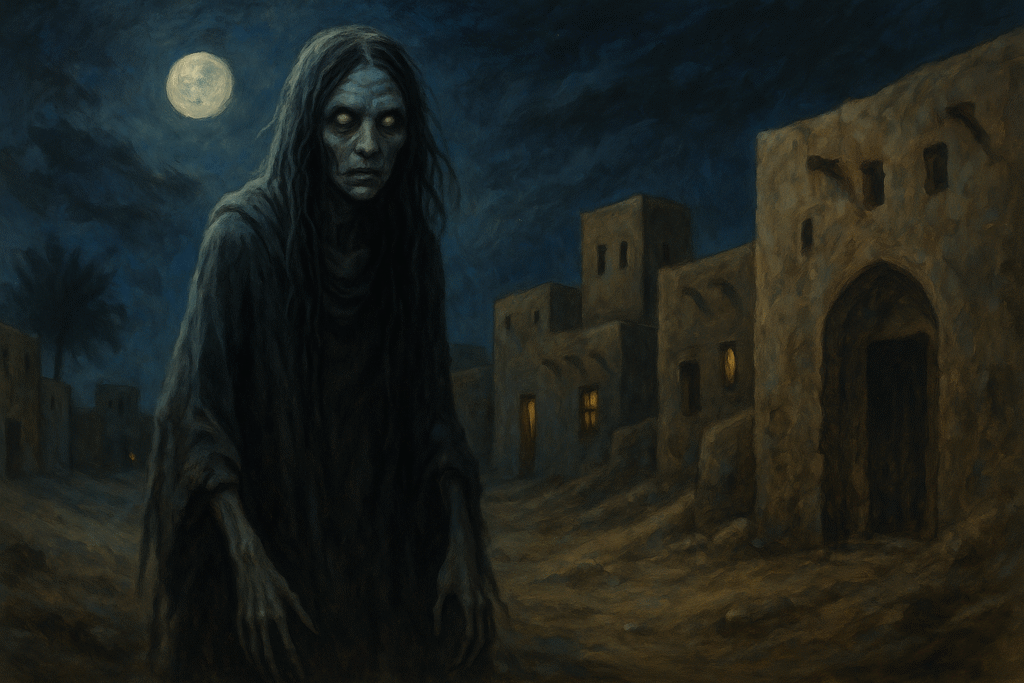
What does Umm Al Subyan represent in Middle Eastern folklore?
Umm Al Subyan is a feared spirit in Bahrain and across the region. Many stories claim she targets infants and toddlers. Families said she caused unexplained illness or restlessness in children. She is usually described as a tall, thin figure with long limbs and a shadowy shape.
Families used charms, prayers and rituals to protect their children from her. These traditions helped people feel safer during times when medical care was limited.
Folklorists believe her story may have helped explain sudden fevers or night terrors. These conditions were frightening and hard to understand, so communities used stories to express their fears and find comfort. Umm Al Subyan became a symbol of the care and protection children needed.
4. Al Salewa – The Witch-Beast of the Sands
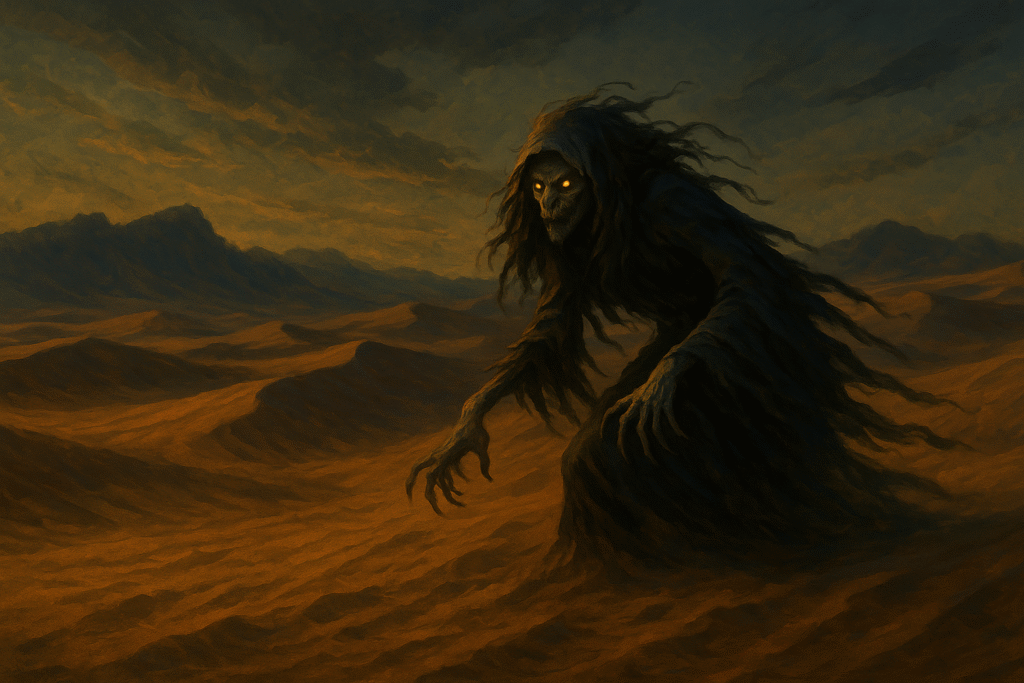
Is Al Salewa a witch or a beast in Arabian legends?
Al Salewa appears in many desert stories in Bahrain and nearby regions. She is often described as part human and part animal. Some tales show her as a wild, witch-like woman. Others say she stands like a person but moves like a beast.
Her stories warn travelers about the dangers of walking alone in the desert. She represents fear of isolation and the risk of losing one’s way. Parents also used her story to keep children away from empty areas or strange voices.
Al Salewa reflects the unpredictable nature of the desert. People never knew what could be hiding in the dark or behind the dunes.
5. Desert Jinn – Invisible Beings of Abandoned Places
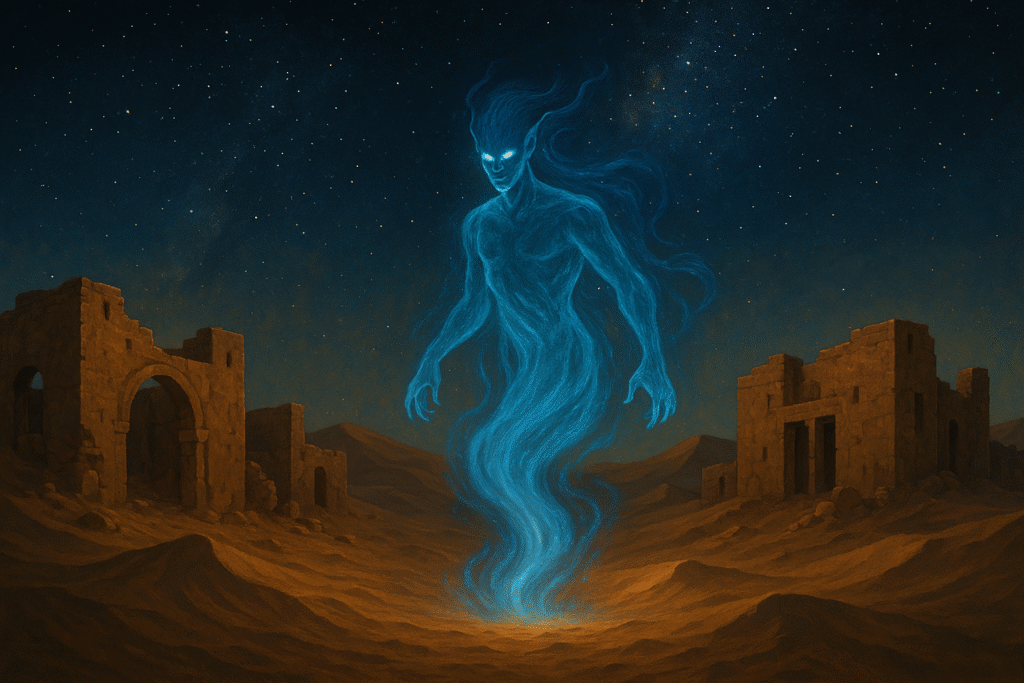
Are jinn part of Bahrain’s traditional desert myths?
Jinn appear often in Bahraini folklore. People believed many of them lived in empty or forgotten places. These included old wells, ruins, caves and wide stretches of sand. Jinn were said to be invisible unless they chose to appear. They could look like humans, animals or something in between.
In these stories, jinn might help someone or cause mischief. Travelers were encouraged to be careful in lonely places and to show respect. These tales matched Islamic teachings that describe jinn as beings with free will who live in a world parallel to humans.
Desert jinn helped people understand risky places and unpredictable events. They remain an important part of Bahrain’s cultural identity.
Sea Creatures of Bahrain
1. Sea Jinn – Guardians and Hunters of the Deep
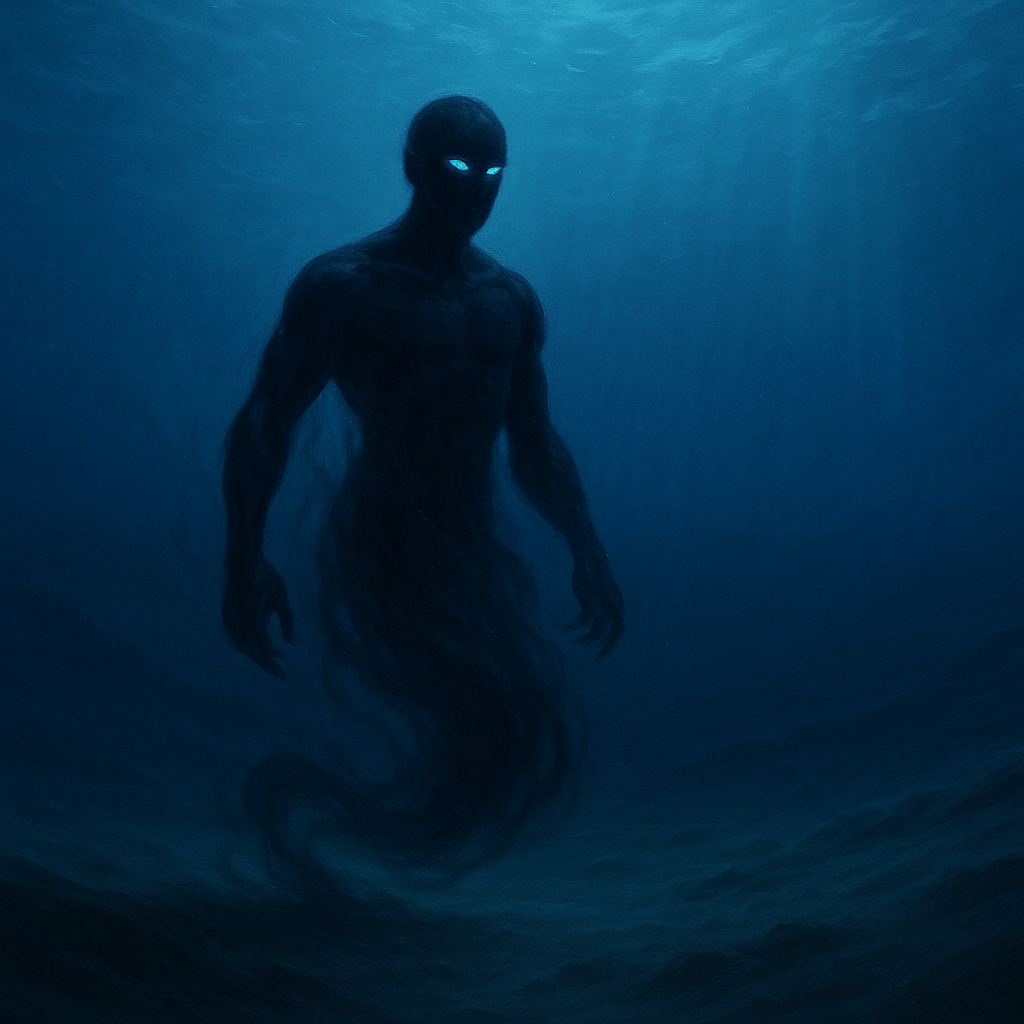
Do jinn live in the sea according to Bahraini folklore?
Sea jinn are well known in Bahraini stories. They were believed to live in deep waters, hidden caves and coral passages. Fishermen and pearl divers often blamed them for sudden storms, drownings or strange noises underwater.
Many divers felt pressure or fear when they were deep below the surface. Without modern tools, these moments were hard to understand. People explained them through stories of sea jinn.
Before going out to sea, some fishermen prayed or avoided certain actions they believed attracted these beings. Sea jinn showed how respected and feared the ocean was. It provided life but also took lives without warning.
2. The Pearl-Diver Spirits – Watchers of the Underwater World
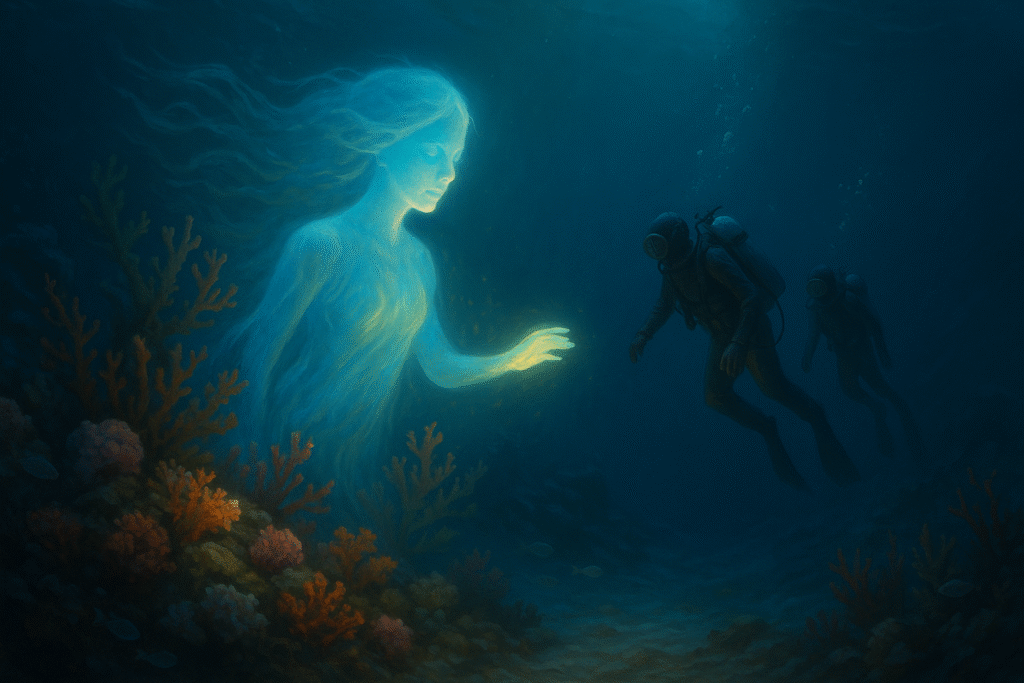
Why did pearl divers believe in sea spirits?
Pearl diving was one of the hardest jobs in Bahrain. Divers went into deep water with little protection. They faced darkness, strong currents and the risk of running out of air. Many said they felt watched or guided by unseen forces.
Some stories describe helpful spirits who protected divers from harm. Others talk about spirits who punished greed or carelessness. When divers did not return, families sometimes said the sea spirits were angered.
These tales helped divers understand the dangers they faced. They also encouraged respect for the sea and its resources. The stories kept alive the memory of Bahrain’s long history with pearls.
3. The Sea Serpent (Hayya) – The Great Gulf Beast
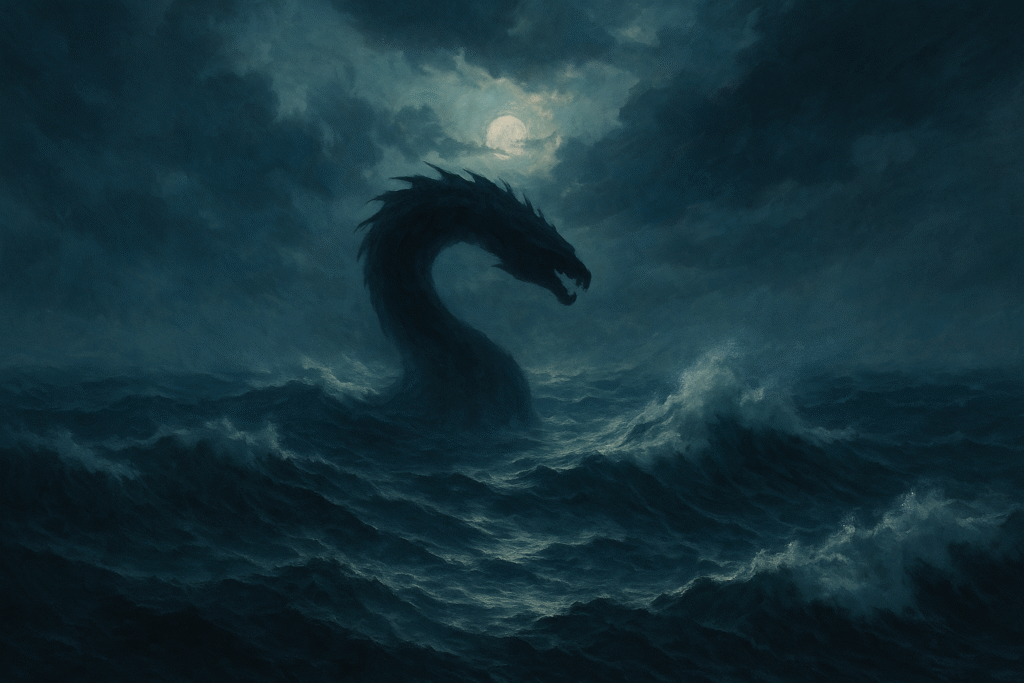
Is there a sea serpent in Arabian Gulf mythology?
The Hayya is a popular sea story in Bahrain. It describes a huge serpent that lives in deep waters. People said it caused whirlpools and rough waves, especially during storms or at night.
Some researchers believe this creature may connect to ancient Mesopotamian myths. Those myths featured large sea creatures that represented powerful natural forces. Over time, the idea may have blended with local stories about the Gulf.
Many sightings came from moments when sailors saw large shadows or unexpected waves. Without clear explanations, people filled the gaps with stories. The Hayya became a symbol of the sea’s mystery and strength.
4. Merfolk and Siren Variants
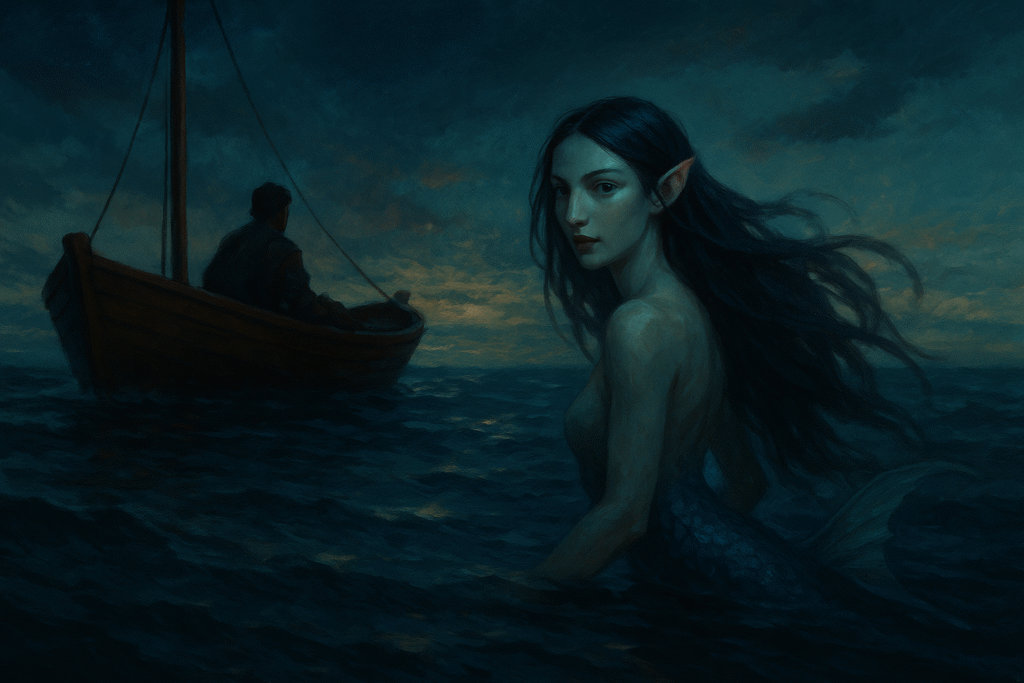
Do Arabian myths include mermaids or sea sirens?
Arabian and Bahraini folklore includes stories of mermaid-like beings. In many versions, they are seen as jinn who take the shape of beautiful women. They use their voices to attract sailors. These tales warn people not to follow unknown sounds near the shore or on the open water.
Some stories talk about figures who appear at dusk or swim beside boats before vanishing. These tales often acted as warnings for sailors to avoid risky behavior.
Although not as common as Western mermaids, these figures still reflect curiosity, caution and respect for the sea.
5. Coral Spirits (Al-Murjan)
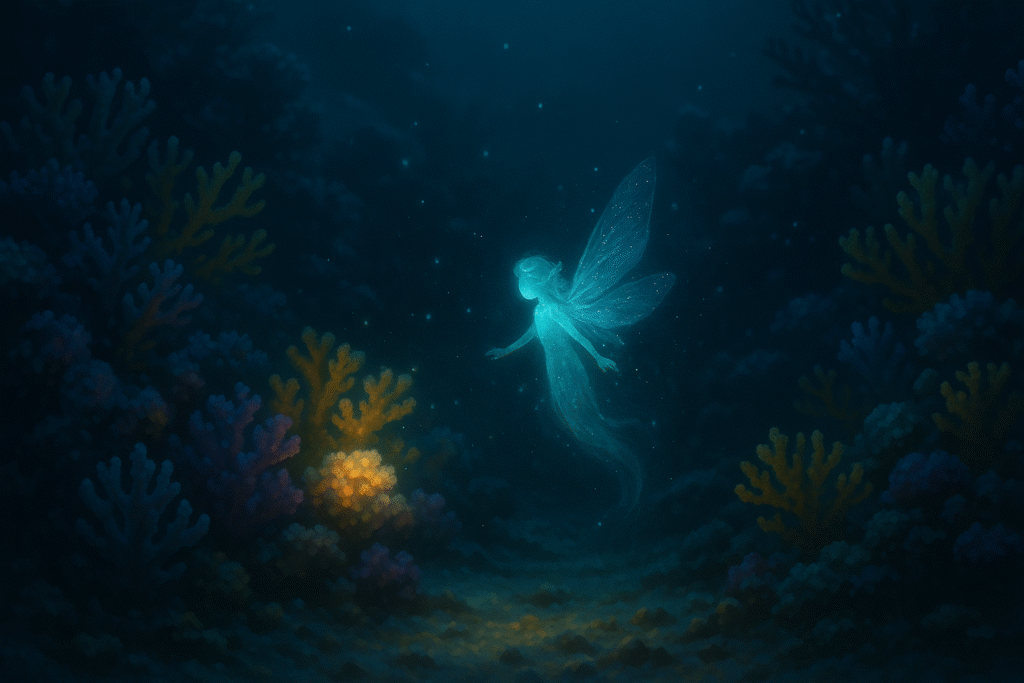
What are coral spirits in Gulf mythology?
Al-Murjan are gentle beings said to live in coral reefs. They are described as small, light and connected to the underwater world. Some stories claim they protect marine life and coral gardens.
People believed that damaging coral or entering tight reef tunnels without care could anger these spirits. This belief encouraged caution among divers.
These stories are less common than tales about jinn or sea serpents. Still, they show how people valued the beauty and balance of Bahrain’s coral reefs.
